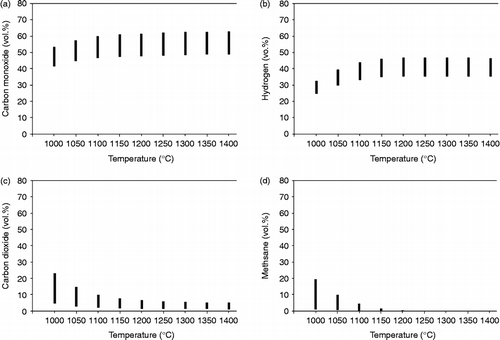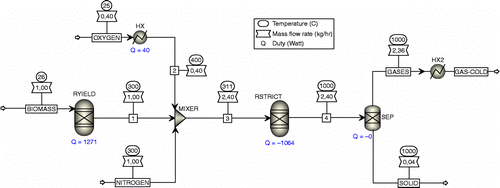Figures & data
Table 1 Chemical reactions in the gasifier.
Table 2 The ultimate and proximate analyses of feedstock.
Table 3 The set-up data are used by simulation.
Table 4 Energy balance of biomass.
Table 5 Comparison of product gas compositions obtained with experiments and simulations at 1000°C.
Figure 3 Experiments and simulation results of product gas with rice husk gasification as a function of temperature.
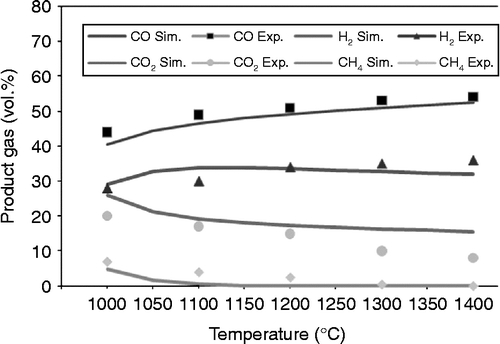
Figure 4 Experiment and simulation results of product gases with sawdust gasification as a function of temperature.
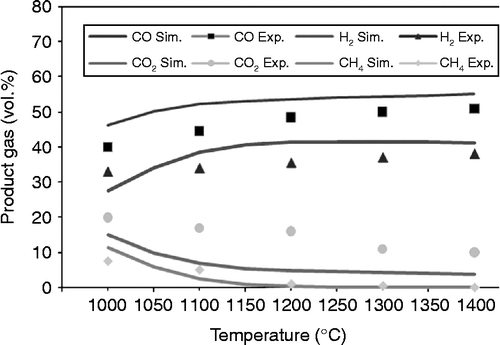
Table 6 Mean error analyses.
Figure 5 Effect of temperature on the product gases of rice husk, sawdust and JCL oil cake. (a) Carbon monoxide (CO), (b) hydrogen (H2), (c) carbon dioxide (CO2) and (d) methane (CH4).
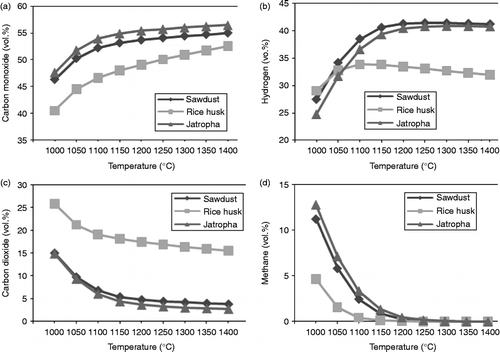
Figure 6 Maximum and minimum possible values of product gases of JCL oil cake according to mean error analysis prediction. (a) Carbon monoxide (CO), (b) hydrogen (H2), (c) carbon dioxide (CO2) and (d) methane (CH4).
